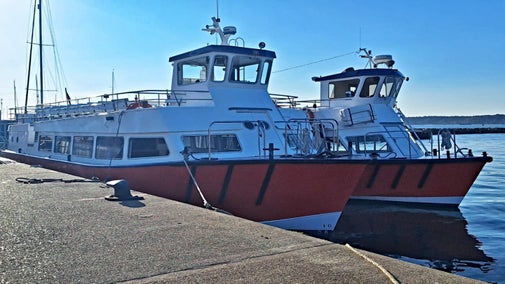
Donate
Everyone needs nature, now more than ever. Donate today and you could help people and nature to thrive at the places we care for.

There is plenty of wildlife to see all year round on the island and things change with the seasons. Take a walk through the woodland or down to the lagoon, and don’t forget your binoculars.
The skies above Brownsea are filled with Sandwich and common tern flying in from Poole harbour with food for their young. Look out for the fluffy chicks on the islands in the lagoon.
Dragonflies and damselflies are on the wing and can be seen in large numbers over the Dorset Wildlife Trust reserve.
Oystercatchers have nested in the courtyard for the last two years, this year they have chosen the castle gardens. You may see the adult birds flying over the café area with food for their chicks.
Red squirrels are not as easy to spot in the summer months due to the thicker vegetation, they also tend to be more active during the cooler parts of the day, such as early morning or late evening, making them less visible during the day.
However, if you have the time and patience to perch on a log in the woodlands behind the church you might get lucky. 🐿️
Common and Sandwich terns nest on the specially-created gravel islands. A pair of avocet succesfully bred here in 2023 and there are several species of widlfowl on view, including teal and shelduck.
Over 20,000 birds visit Poole Harbour each year to feed and roost. Brownsea Island is managed in partnership with Dorset Wildlife Trust who look after the northern part of the island, including the lagoon and surrounding wetland areas.
The various hides clustered around the edge of the lagoon offer a great perch to watch all the comings and goings of the various bird life.
There is usually a volunteer in the first hide with a telescope attached to a screen, giving visitors some great close-up views of the birds.

Out on the heathland, the well camouflaged, nocturnal nightjar returns from Africa. Any visitors staying overnight may be lucky enough to spot them flying at dusk.
Listen out for the 'scratchy' call of the Dartford warbler, there are 3 pairs with young this summer and they can sometimes be seen perched on gorse bushes and heather.
On warmer days common and sand lizards, slow worms and the occasional snake can be seen basking in the sunshine.
Look out for butterlies and other insects flying through the woods and across the heath. Down on the ground wood ants can be seen marching to and from their large writhing anthills.
A large variety of bee species feed on the heather and other wildflowers that grow on the island.
Please refrain from bringing food to the island for the squirrels. It's important for them to forage naturally, and excess food can attract rats. We appreciate your cooperation. Thank you

Red squirrels are an endangered species in the UK due to the loss of their woodland habitat and the introduction of the American grey squirrel.
While both species of squirrel have a similar role in the ecosystem in that they are small woodland mammals that spread the seeds of trees, red squirrels are a particularly important asset in the regeneration of pine woodlands.
Reds are specially adapted to feed on the seeds in pine cones and greys tend to favour broadleaf woodland where many other animals can do the job of spreading the seeds, such as birds.
If red squirrels became extinct in the UK, it would not only have a negative impact on our pine woodland regeneration but we would also lose one of our most iconic native mammals.
Red squirrels are most active in spring and autumn, so a visit during those seasons is the most likely to be rewarded with sightings.
They're usually spotted during the quieter times of the day, so a good time to spot them is when we first open or later in the afternoon before we close.
You could also stay overnight on the campsite and go red squirrel spotting when it’s quieter.
Try your luck on the Woodland Walk and don't forget to look up, down and all around.
Red squirrels are most often found in the coniferous woodland areas, feasting on nuts and seeds, or you may find pine cones that have been nibbled, leaving what looks like a nibbled corn on the cob.
Squirrels have been spotted on the woodland walk, near the Church, either posing for photographers or leaping between the oaks. Another good place to try is by the feeders up by the Villa on the Dorset Wildlife Trust managed area.
The Dorset Wildlife Trust manage the lagoon and wetland areas and there is a suggested donation of £2 to enter this part of the island, which includes access to hides and admission to the Wildlife and Wetland Centre.
Live webcams installed by the Dorset Wildlife Trust and Birds of Poole Harbour offer the chance to watch the comings and goings live. Catch up with all the action here.

Everyone needs nature, now more than ever. Donate today and you could help people and nature to thrive at the places we care for.
Discover how a team from the National Trust support the woodland residents on Brownsea Island, Dorset.

In this article you'll find all you need to know to plan your visit to Brownsea, including how to get here by ferry.
